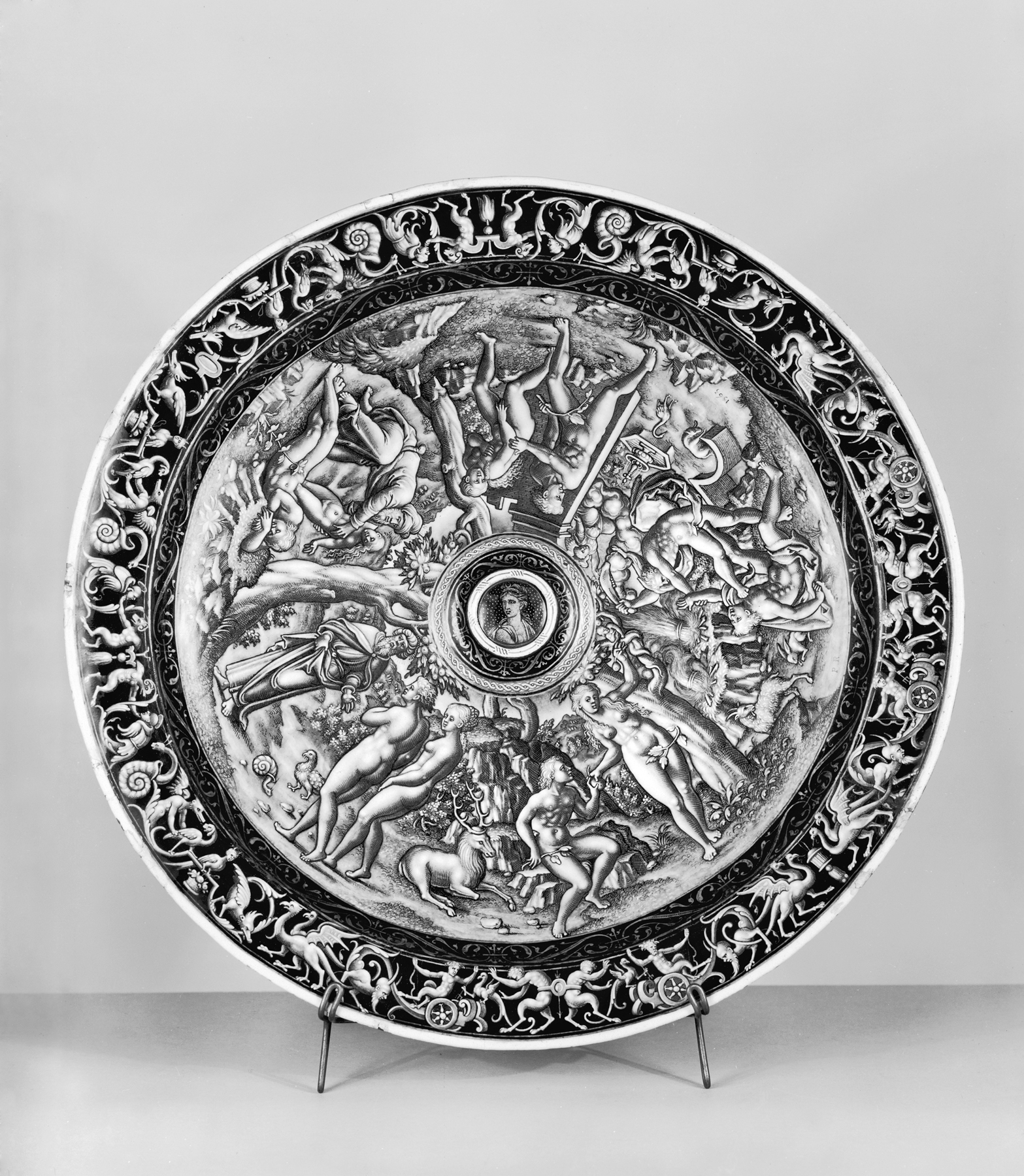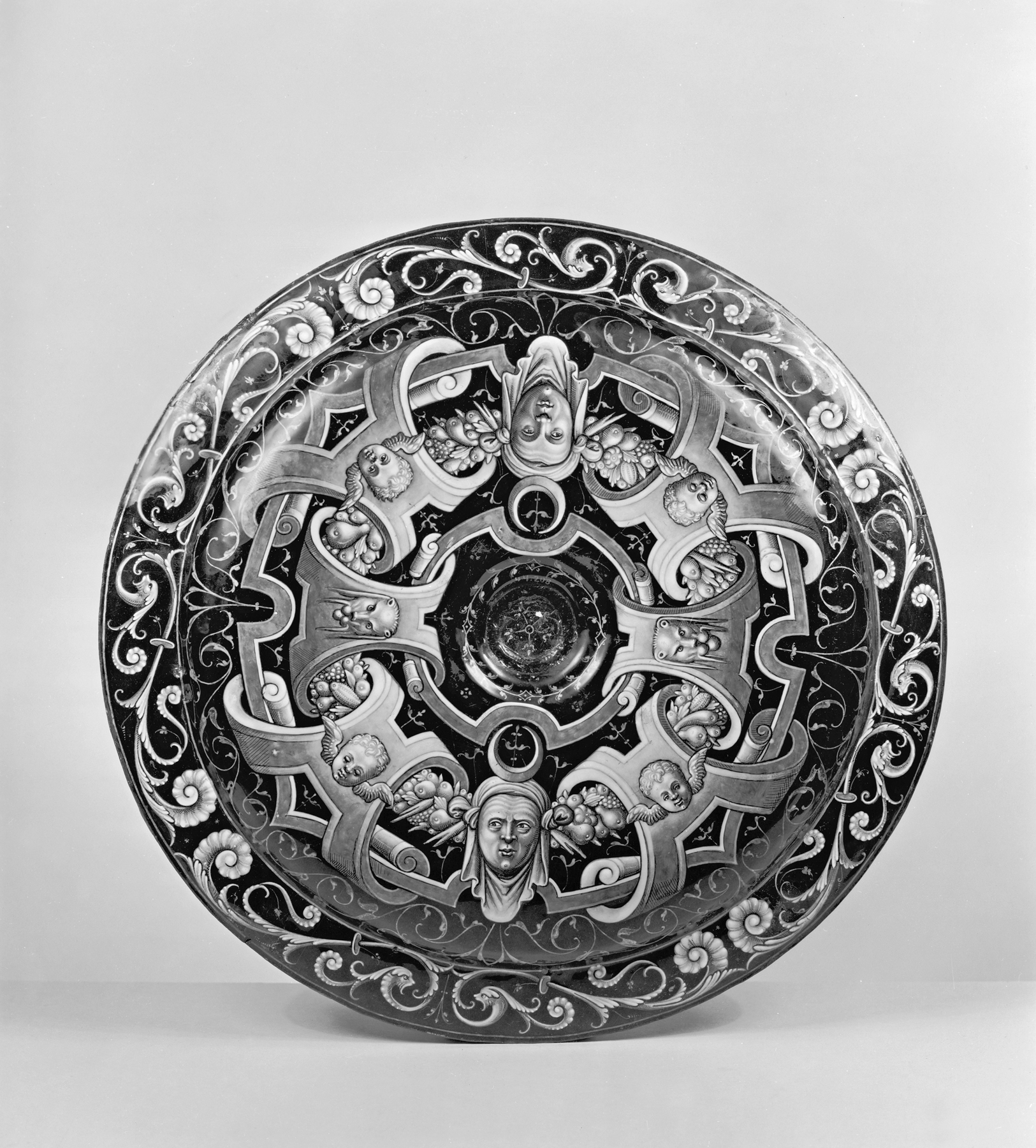Ewer Basin Depicting Five Scenes from Genesis
This ewer stand would have ben accompanied by a ewer or pitcher. The five scenes separated by trees or rocks are from Genesis: God creating Eve from the rib of Adam, God introducing Adam and Eve to the Garden of Eden, the Original Sin, Cain killing Abel, followed by (rather than preceded by) Adam and Eve fleeing the Garden. As on the ewer nearby, a serious biblical story, the representation of which is based on engravings dated 1529 by Lucas van Leyden, is complemented by an amusing, inventive border of cavorting monsters. The central medallion with the ancient Roman goddess Diana is a replacement.
Provenance
Provenance (from the French provenir, 'to come from/forth') is the chronology of the ownership, custody, or location of a historical object. Learn more about provenance at the Walters.
Marquis of Salamanca [date and mode of acquisition unknown]; Sale, London, April 14, 1874, lot 279; Frederic Spitzer [date and mode of acquisition unknown]; Sale, Paris, April 17-June 16, 1893, lot 501; Charles Stein [date and mode of acquisition unknown]; Sale, Paris, June 8-10, 1899, lot 22; Seligmann Brothers, Paris [date and mode of acquisition unknown]; Henry Walters, Baltimore, 1905, by purchase; Walters Art Museum, 1931, by bequest.
Geographies
France, Limoges (Place of Origin)
Measurements
Diam: 18 1/8 in. (46 cm)
Credit Line
Acquired by Henry Walters, 1905
Location in Museum
Accession Number
In libraries, galleries, museums, and archives, an accession number is a unique identifier assigned to each object in the collection.
In libraries, galleries, museums, and archives, an accession number is a unique identifier assigned to each object in the collection.
44.208




